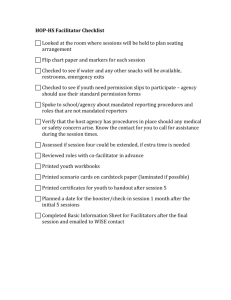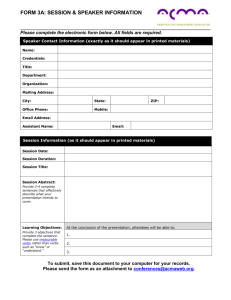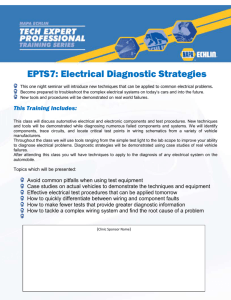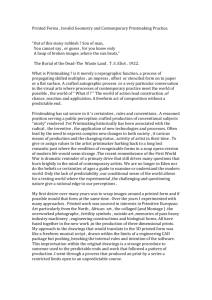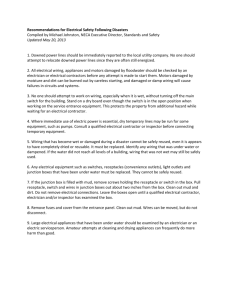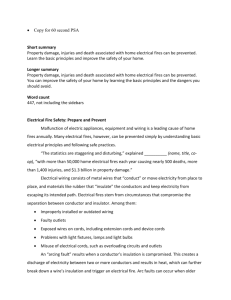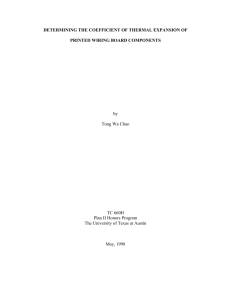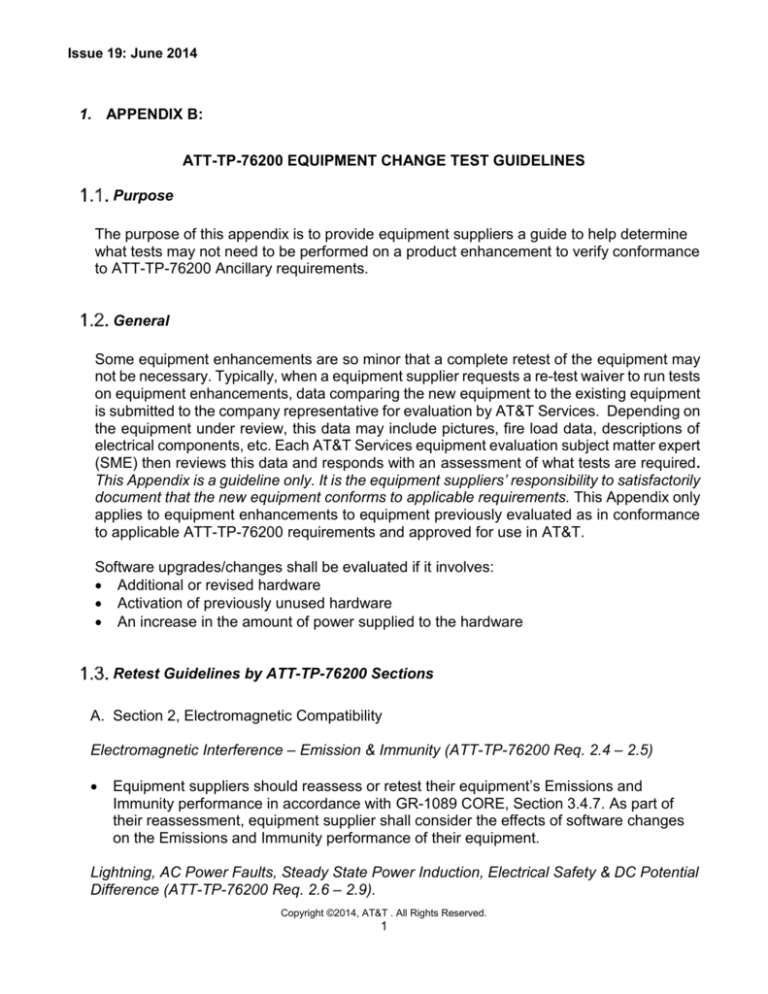
Issue 19: June 2014
1. APPENDIX B:
ATT-TP-76200 EQUIPMENT CHANGE TEST GUIDELINES
Purpose
The purpose of this appendix is to provide equipment suppliers a guide to help determine
what tests may not need to be performed on a product enhancement to verify conformance
to ATT-TP-76200 Ancillary requirements.
General
Some equipment enhancements are so minor that a complete retest of the equipment may
not be necessary. Typically, when a equipment supplier requests a re-test waiver to run tests
on equipment enhancements, data comparing the new equipment to the existing equipment
is submitted to the company representative for evaluation by AT&T Services. Depending on
the equipment under review, this data may include pictures, fire load data, descriptions of
electrical components, etc. Each AT&T Services equipment evaluation subject matter expert
(SME) then reviews this data and responds with an assessment of what tests are required.
This Appendix is a guideline only. It is the equipment suppliers’ responsibility to satisfactorily
document that the new equipment conforms to applicable requirements. This Appendix only
applies to equipment enhancements to equipment previously evaluated as in conformance
to applicable ATT-TP-76200 requirements and approved for use in AT&T.
Software upgrades/changes shall be evaluated if it involves:
Additional or revised hardware
Activation of previously unused hardware
An increase in the amount of power supplied to the hardware
Retest Guidelines by ATT-TP-76200 Sections
A. Section 2, Electromagnetic Compatibility
Electromagnetic Interference – Emission & Immunity (ATT-TP-76200 Req. 2.4 – 2.5)
Equipment suppliers should reassess or retest their equipment’s Emissions and
Immunity performance in accordance with GR-1089 CORE, Section 3.4.7. As part of
their reassessment, equipment supplier shall consider the effects of software changes
on the Emissions and Immunity performance of their equipment.
Lightning, AC Power Faults, Steady State Power Induction, Electrical Safety & DC Potential
Difference (ATT-TP-76200 Req. 2.6 – 2.9).
Copyright ©2014, AT&T . All Rights Reserved.
1
Equipment Physical Design Standards
AT&T Services, Inc.
ATT-TP-76200, Issue 19
June 2014
Equipment supplier’s should reassess or retest their equipment’s performance for
Lightning, AC Power Faults, Steady State Power Induction, and Electrical Safety & DC
Potential Difference whenever materials, components, circuit layout or accessibility is
changed. .Equipment should be reassessed or retested when changes in software
activate hardware not previously active or affect the equipment’s ability to the EMC
requirements of ATT-TP-76200 (Req. 2.6 – 9). The equipment’s reassessment or
retesting may include all of the technical requirements in these sections of ATT-TP76200. However, the reassessment or retesting is usually limited to only those
technical requirements effected by the change in the equipment.
B. Section 3, Acoustic Noise (ATT-TP-76200 Section. 3.)
Equipment suppliers should reassess or retest their equipment’s Acoustic Noise
performance when a change is made to the equipment’s fan design, fan control system
or a change in the number of fans within the equipment.
C. Section 4, ESD
Subsystems should be tested whenever changes are introduced that may alter ESD
susceptibility. Such changes may include a modified printed wiring board, new/or
additional components additional components, changes to the power supply, additional
telecommunications ports, and changes in chassis design, software activation of
existing hardware or increased clock speed.
D. Section 5, Grounding
The only Grounding requirements for Ancillary equipment are the short circuit tests.
Embedded ac or dc power supplies should be tested whenever changes are introduced
that could alter these. Such changes may include a modified printed wiring board, new
components or additional components, changes to the power supply, additional
telecommunications ports, changes in chassis design, software activation of existing
hardware or increased clock speed.
E. Section 6, Thermal
F. Temperature and Humidity
If the new equipment is significantly different from existing compliant equipment (e.g.,
different sub components, wiring, spacing, etc.) the previous test data may not be
applicable to the new equipment. In order to be allowed to forego temperature and
humidity testing on a new equipment, the equipment supplier needs to demonstrate to
AT&T Services that the new equipment is physically almost identical to the existing
compliant equipment. This may be done via photographs, written descriptions,
statements, etc.
Equipment Physical Design Standards
AT&T Services, Inc.
ATT-TP-76200, Issue 19
June 2014
Heat Dissipation
Heat dissipation should be recalculated whenever a change is introduced that changes
the power usage of the unit.
Airflow Path
Airflow path(s) should be updated whenever a change is introduced that changes the
documented airflow(s) of the unit.
Direction and Velocity (Effective 1/1/2012)
Direction and velocity(ies) of the designated airflow paths should be updated whenever
a change is introduced that changes the documented airflow(s) of the unit.
G. Section 7, DC Power
The equipment supplier may perform an analysis, using good engineering based on
similarities to the existing equipment, predicting the probable conformance of the new
equipment to Ancillary DC Power requirements. This analysis should consider similarities
and differences of electric components, wiring, and power levels. The analysis shall be
submitted to the company representative for review and approval by AT&T Services.
H. Section 8, Airborne Contaminants
In reference to Airborne Contaminants testing, Telcordia GR-1274-CORE, states that “The
qualification test shall be passed once for each new family of printed wiring assemblies.”
Based on Telcordia’s assessment, new assemblies for enhanced equipment need not be
tested for airborne contaminants if they meet the criteria for the same design family of
printed boards, defined as follows:
A design family consists of printed wiring boards from the same manufacturer; using the
same design rules for minimum line spacing and maximum electric field, and using
components that require the same bias voltages. Within the same design family,
boards shall have the same finish, i.e. they shall all be bare or all be coated with the
same overcoat.
If the equipment supplier does not test some or all of the printed wiring boards in
enhanced equipment, they shall supply a statement affirming that the board(s) not
tested meets the definition for being in the same design family of a equipment
previously approved for use in AT&T. Documentation verifying the conformance of the
tested card must be submitted for review.
I. Section 9, Shock and Vibration
Equipment Physical Design Standards
AT&T Services, Inc.
ATT-TP-76200, Issue 19
June 2014
Equipment should be tested whenever changes are introduced that could alter the physical
integrity of the unit.
Section 10, Fire Resistance:
Reasons for Reassessment
Generally, equipment that have been determined to be acceptable for purchase from a fire
resistance perspective do not have to be re-evaluated or retested unless subsequent changes
to the equipment include one or more of the following:
1) A change in the manufacturer's unique equipment identifier.
2) A modification to an equipment assembly's enclosure that increases ambient air
circulation.
3) The addition of integral or separately mounted cooling fan(s) or a manufacture's
requirement or recommendation that fans be used with the equipment.
4) The substitution of metallic apparatus with combustible material.
5) A change in an equipment assembly's electrical protection circuitry that increases the
ampere rating of an overload protection device or affects the operational characteristics
of a cooling fan.
6) The addition of printed circuit board(s) to one or more existing printed circuit board.
7) The addition of vertically oriented printed circuit boards to the extent that overall circuit
board surface area within the unit is increased by 300 cm 2 (46.5 in.2).
8) Evolution of plug-in circuit packs used in equipment makes it questionable whether the
equipment accurately resembles its original test configuration.
Acceptance of new Equipment by “similarity” as compared with a previously Approved
Equipment.
Generally ,if a pizza box type equipment having the same size, weight, physical and electrical
properties as well as possessing the same material components to that of a equipment that
has been previously tested and passed for fire propagation characteristics, need not be tested
again.
A statement is required from an approved testing lab stating:
1) Equipment “A” contains same material as Equipment “B”
2) Equipment “A” has the same physical and electrical characteristics as equipment “B”
3) Equipment “A” has same fire propagation characteristics as Equipment “B”
Submit:
4) A test report with date and test results for Equipment “B”
Equipment Physical Design Standards
AT&T Services, Inc.
5) Any exception taken during the test of Equipment “B”
6) Any dissimilarity between Equipment “A” and Equipment”B”
ATT-TP-76200, Issue 19
June 2014

